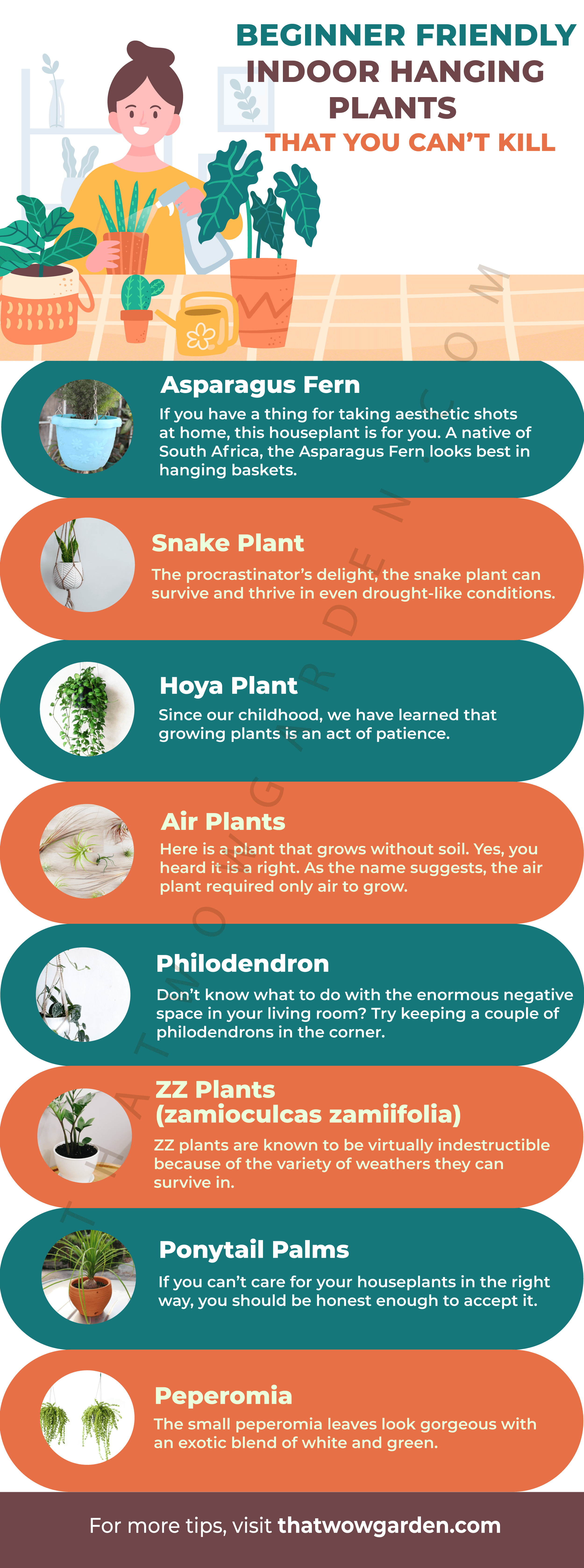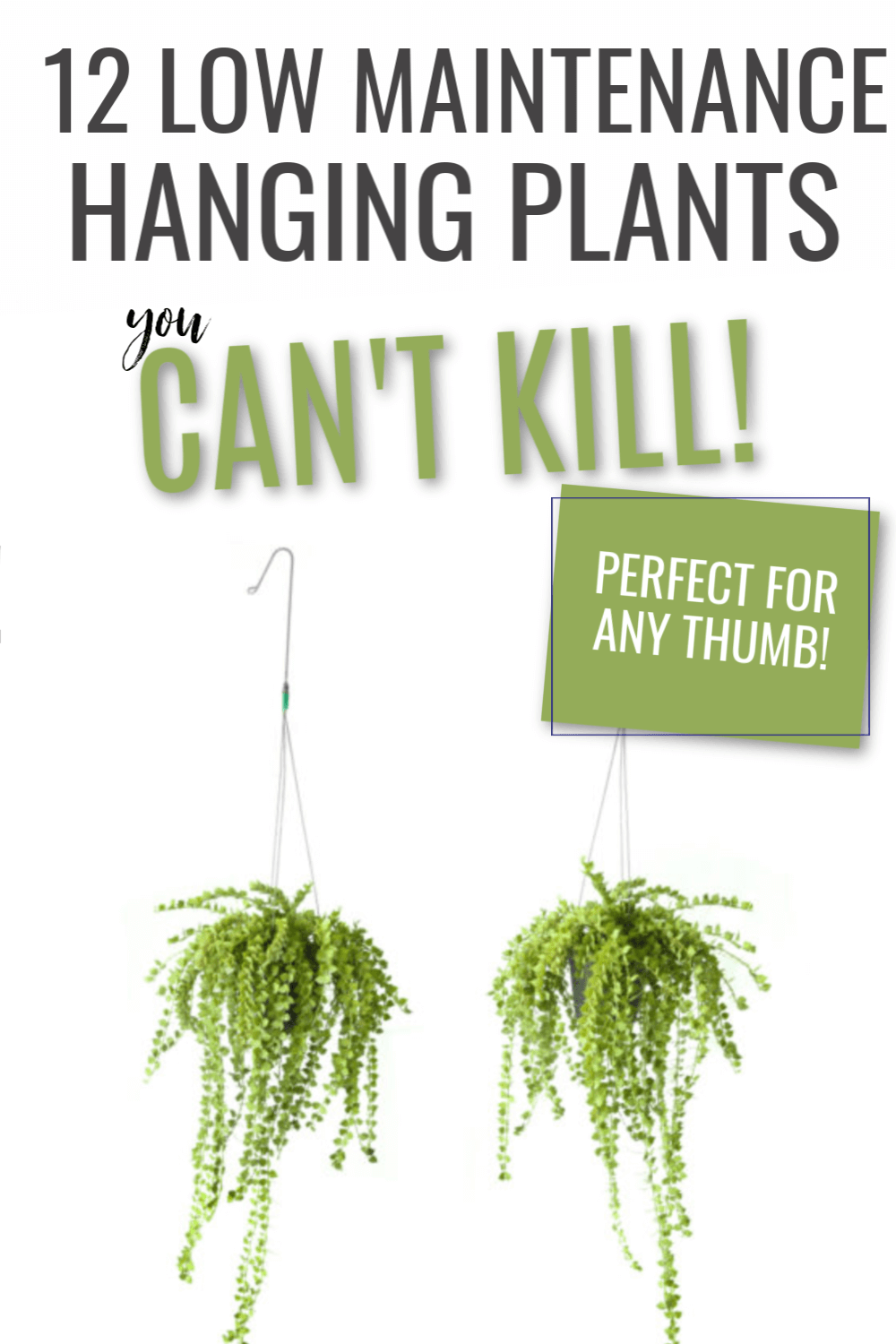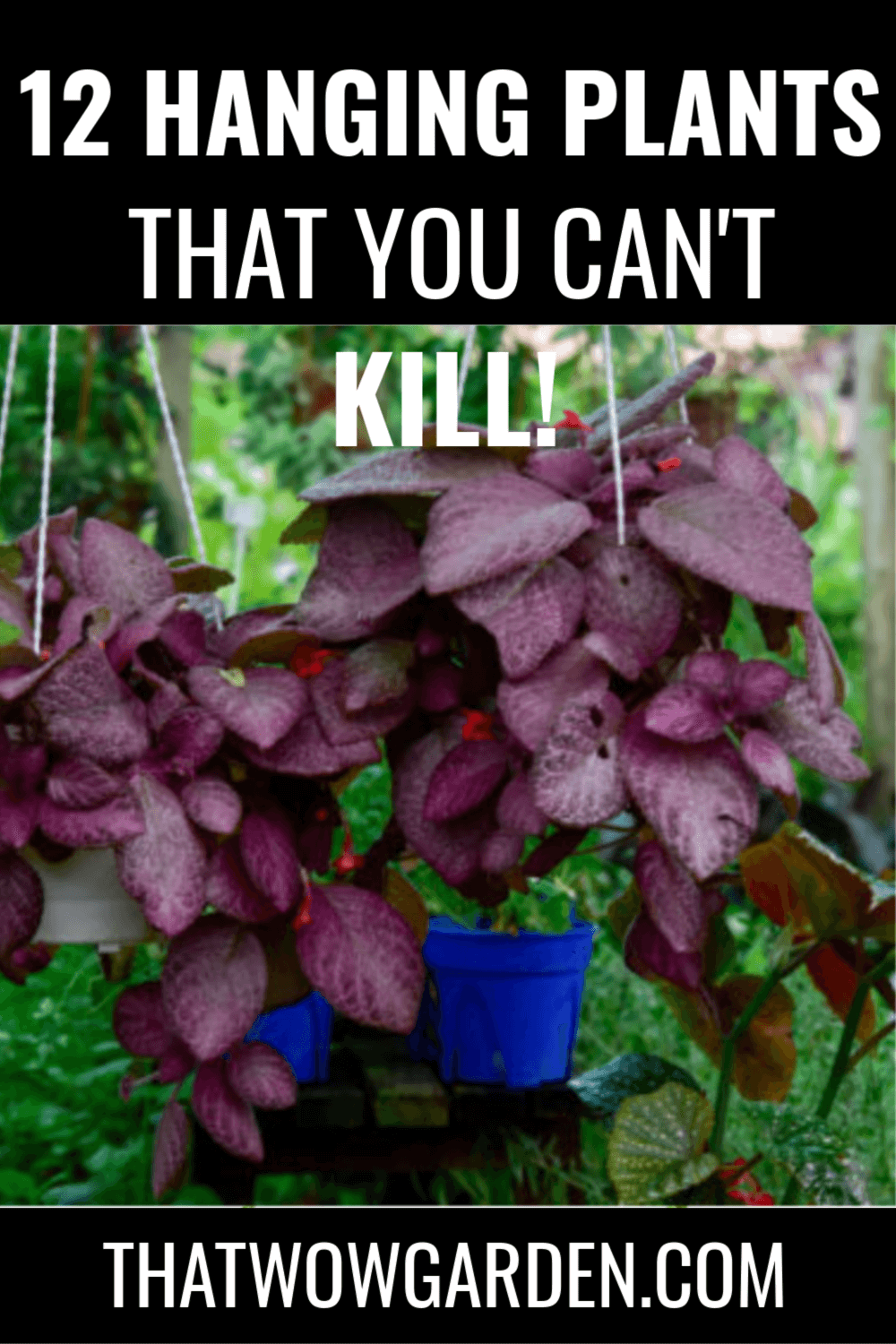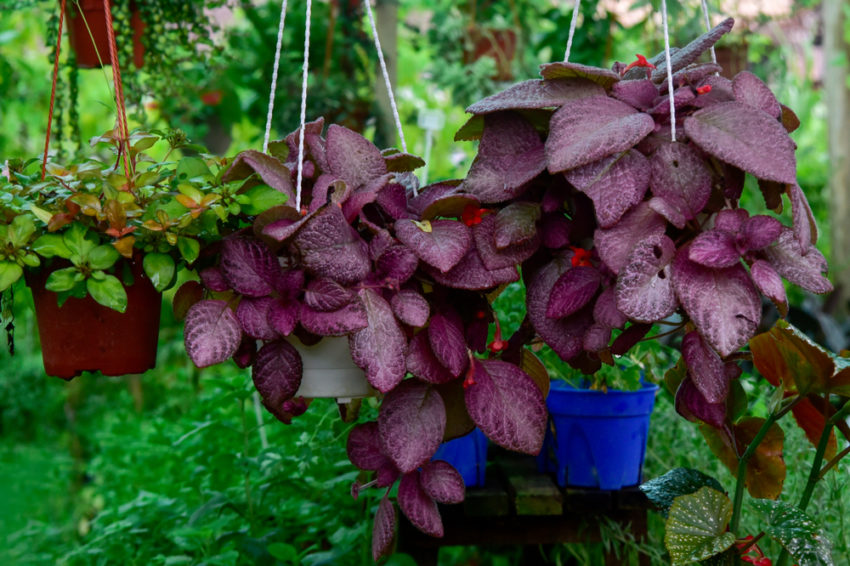How many plants are too much for a house? The answer to this is very subjective. Beginners might think their home is small, and flooding it with houseplants would make it look too cluttered. But you would be surprised to see how beautiful a house full of plants look. And you don’t need to worry about space.
These unassuming gifts of nature make their own space. Keep it on the desk, fridge, shelf, floor, etc. If you have filled that space or don’t want to clutter it, just hang it on the ceiling. Yes, think about loads of unused space on your roof.
There are two main methods to do that. You can either hang your plants on a pot hooked to the ceiling or let the creepers flow on the walls. And there is a wide variety of plants that you can hang. So how do you choose the ones ideal for you?
The problem with beginners is that they aren’t used to caring for plants. Understandably, you’re worried about your plants drying about because of your carelessness. But we have a solution for you. Here are listed 12 beautiful hanging plants that require little maintenance.
They would survive the worst of the conditions. You can also call them comfort plants. But one little problem remains. You still have to choose the best out of these beautiful options.
12 Beginner Friendly Indoor Hanging Plants That You Can’t Kill
1. Asparagus Fern
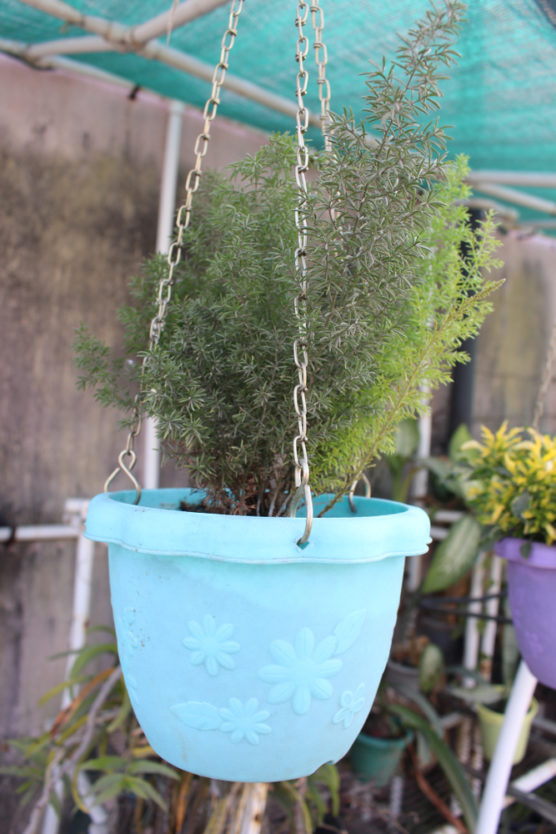
If you have a thing for taking aesthetic shots at home, this houseplant is for you. A native of South Africa, the Asparagus Fern looks best in hanging baskets. Its feathery leaves and white flowers make it a great addition to any decor.
You can also hang this in front of white walls or keep it on your desk. It would act as a great background accessory. Asparagus Fern can grow as long as six feet, so you might have to shift its position as it grows.
Care and Maintenance:
The plant prefers indirect bright sunlight. Make sure the room is well ventilated and allow passage of sunlight. But don’t put it directly in front of the window. Water it as and when the topsoil becomes dry. Mostly, you would need to water it once or twice a week. It is an efficient investment and looks good all year long.
2. Snake Plant
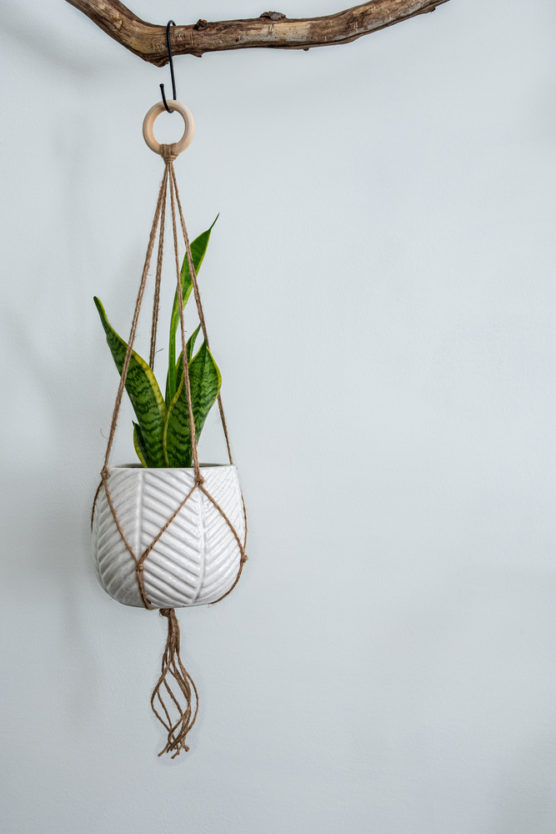
Do you have a traveling job and are struggling to find low maintenance houseplants? Or you want to add a natural touch to your farmhouse? Well, look no further. This snake plant is just what the doctor ordered.
The procrastinator’s delight, the snake plant can survive and thrive in even drought-like conditions. No windows in your room? The snake plant hasn’t got a problem. Moreover, NASA has proven that these long-leaved plants can remove harmful toxins like benzene from your home. They don’t even have insect problems, which makes them an irresistible option for beginners.
Care and maintenance:
The only thing you need to worry about with the snake plant is that it can rot quickly. Don’t let the soil become completely dry. You should ideally water it once every two to six weeks and avoid overwatering it.
3. Hoya Plant
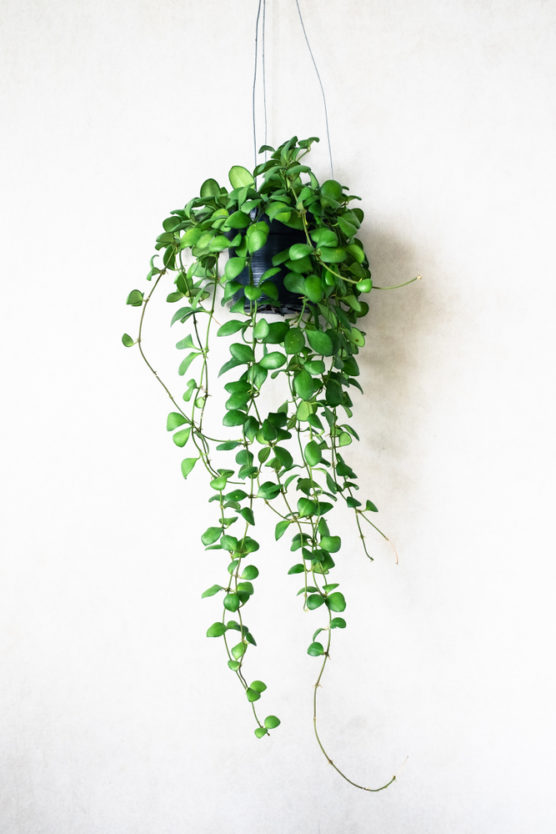
Since our childhood, we have learned that growing plants is an act of patience. It requires consistent maintenance and a lot of patience to grow a plant. But Hoya Plant breaks the stereotypes with its fast-growing speed, ideal for the beginners.
The pleasant fragrance of these plants will surely make your mornings better. The round leaves and flowers have a waxy surface and are a joy to watch. These plants grow on vines so that you can either plant them on a hanging basket or a wall.
Care and maintenance:
Hoya plants grow well in medium to bright indirect sunlight. Protect them from direct sunlight and artificial light by keeping them away from the windows. You only need to water when the soil is dry.
4. Air Plants
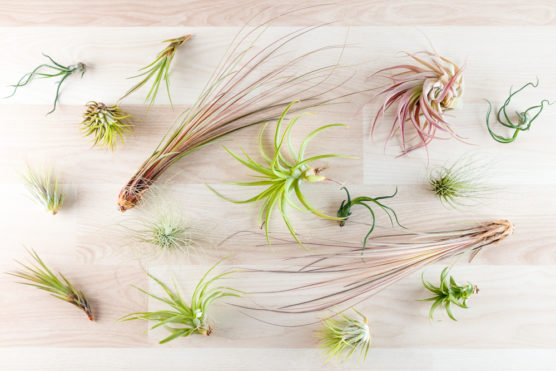
Here is a plant that grows without soil. Yes, you heard it is a right. As the name suggests, the air plant required only air to grow. You just have to shower them every once in a while.
These plants also purify the air, so they are an ideal option for the kid’s room. Plant them in clusters, and they would make for an exciting background for your Instagram stories. They look best in groups of hanging baskets.
Care and Maintenance:
There’s no soil, so you might think it would be good to go without care. Now, don’t forget these plants are still a living thing. Just keep them in a bowl of water for about 3 hours every ten days or so.
5. Philodendron
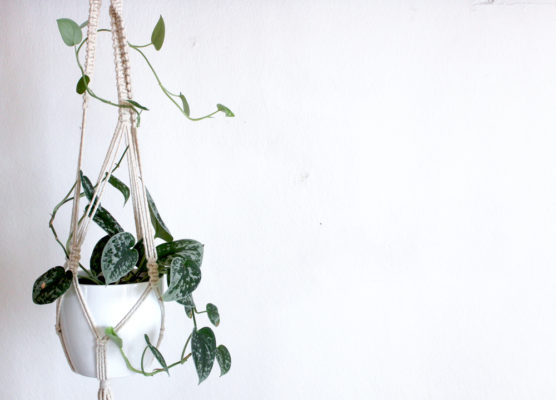
Don’t know what to do with the enormous negative space in your living room? Try keeping a couple of philodendrons in the corner. The huge-leaved plants can take up a lot of space and lend that forest vibe to your home.
They are straightforward to grow and adapt to any weather. It’s thus ideal for places that endure extreme climates. They prefer staying indoors but do like an occasional trip to the yard.
Care and maintenance:
Keep it in a well-lit room with enough windows to ensure bright indirect sunlight. Take them outdoors once in a while, but avoid exposing them for too long, or the leaves would turn yellow. Avoid overwatering them. The thumb rule is to water them once the topsoil is dry.
6. ZZ Plants (zamioculcas zamiifolia)
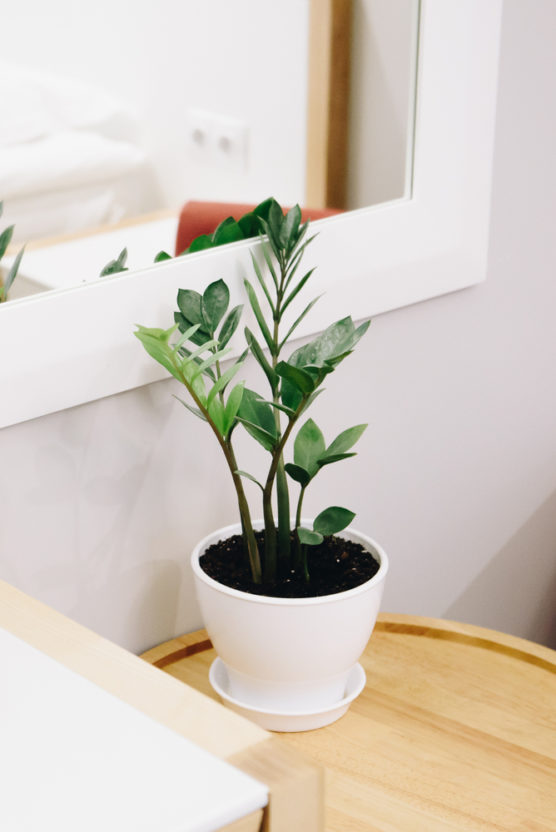
ZZ plants are known to be virtually indestructible because of the variety of weathers they can survive in. If you’re struggling to maintain your houseplants, the ZZ plant is a must-try.
The waxy shine of these plants makes for an ideal accessory for subtle, unassuming decor. Hang them around your entrance. They don’t look overwhelming and present a warm welcome to your guests.
Care and maintenance:
Keep it away from direct sunlight. It’s a must as it is the only way it can dry out. Their ability to grow in little light makes an excellent option for offices and work desks. You should only water them when the leaves are dehydrated. Refrain from overwatering, or it may turn yellow.
7. Ponytail Palms
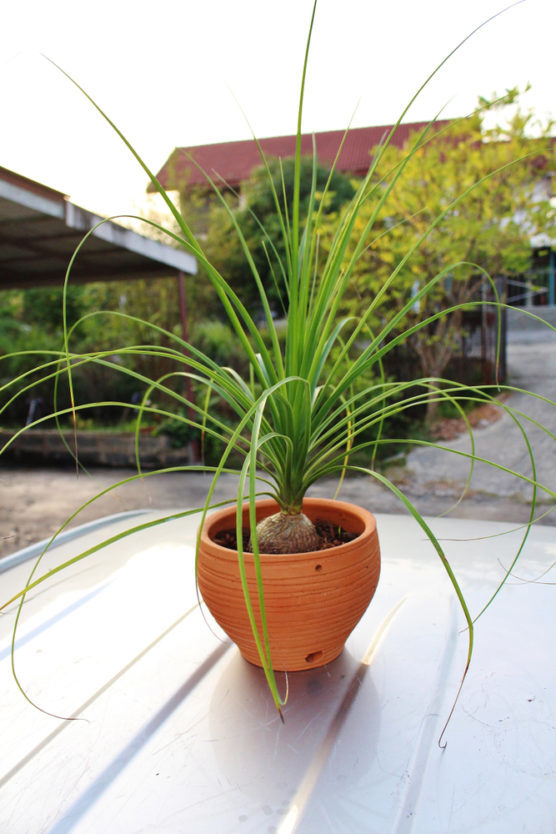
If you can’t care for your houseplants in the right way, you should be honest enough to accept it. And then choose plants that require little maintenance. One such plant is the ponytail palm, which prefers if you leave it alone.
This twine like leaves looks excellent in corners of the room that otherwise look dull. The fun part about the ponytail palms is they don’t actually belong to the palm family.
Care and maintenance:
Ponytail palms are very adaptive. They can survive both outdoors and indoors. But they prefer bright light, so choose a well-lit room for them. You can also keep them out in the summers. They require watering only when the soil is arid.
8. Peperomia
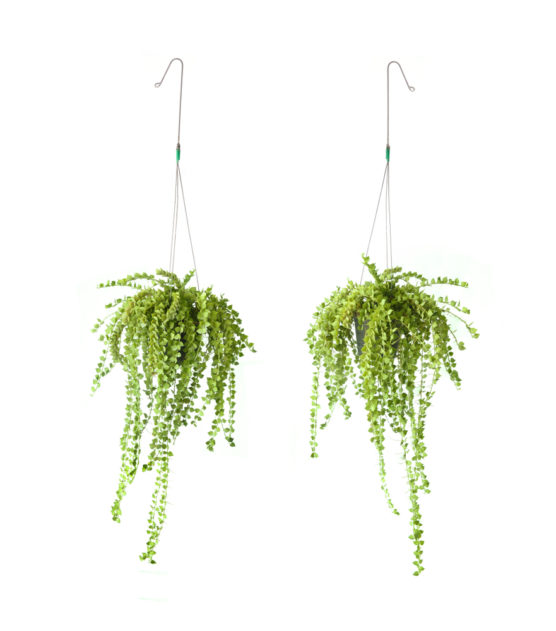
The small peperomia leaves look gorgeous with an exotic blend of white and green. Keep them on your work desk, and you would start loving the place. Moreover, they adapt well to all environments. The Peperomia family has more than a whopping 1000 species, but you are likely to find Peperomia caperata and Argyreia.
Care and Maintenance:
You can make this plant last forever using a straightforward technique. Just plant it in a mixture of gravel and soil to ensure proper oxygen supply to its roots. They are ideal for offices and bedrooms as they even grow well in fluorescent lights. You should water when the soil has dried up to 5 inches from the top.
9. Nerve Plants (Fittonias)
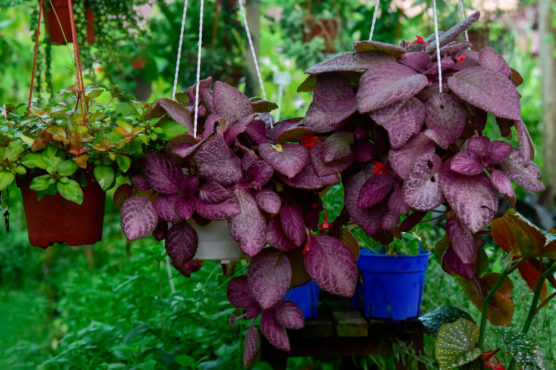
Do you water your plants directly from the hose? Overwatering can cause a severe problem for most houseplants. But to the nerve plants. These little beauties can take up as much water as you throw on them. Wash away your worries of destroying plants now.
The name nerve plants come from the veiny texture of their leaves. The intricate detailing in their veins makes them quite an excellent decor item for your living room. You can also keep these small plants over the fridge, cupboard, and such small spaces. They are available in several colors, including pink, green, and white.
Care and Maintenance:
Since they prefer and absorb a lot of water, you should sow them in peat-based soil to protect them from becoming soggy. Ensure that your pot has a drainage system to minimize the risks of rotting.
They do love humidity but avoid watering them before they are dry. Sprinkle a little water on the leaves to keep them fresh.
10. Bromeliads
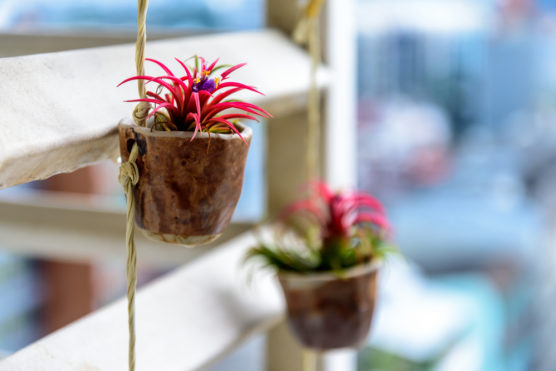
Good things take time, and bromeliads are a great example of this. It’s a bit challenging to bloom a bromeliad indoors. These jungle plants require a copious amount of warmth, indirect light, and humidity. Moreover, blooming them is a work for patience as it can take months. But once you see your bromeliad blooming, you’ll fall in love with them.
Several species of bromeliads also have stunning leaves and work great as a decor item, even without the flowers. You can also multiply these plants when pups appear at its base. Just plant it in a new pot and make your indoor garden.
Care and Maintenance:
Bromeliads require frequent watering as they flourish in humidity. Fill the central cup whenever you see the topsoil drying and sprinkle on the leaves every day.
11. Lucky Bamboo
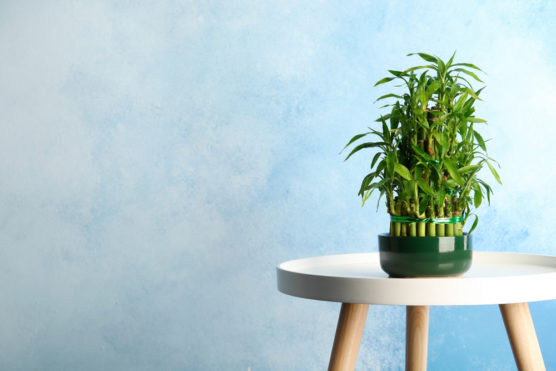
A species of dracaena, the Lucky Bamboo, is the perennial office plant. They not only sustain but thrive in the most unsuitable conditions to keep plants. Inadequate lighting or poor air quality is no major obstacle for them.
They will also come in handy if you have your windows sealed in the winter months. If you’re one to believe stereotypes, the word is Lucky Bamboo brings positive energy and good luck to the surroundings. That’s what makes them a popular gifting plant too.
Care and Maintenance:
These low maintenance plants require watering once a week at max. You are good if you forget it at times by a day or two. But don’t overwater them. They look great in vases filled with pebbles and water. If some leaves of your Lucky Bamboo have dried and become yellow, just pluck them out as you can’t turn them back green.
Make sure the pot is well-drained with no water floating on the top. Keep the pot well-aerated, and it will last a long time.
12. Cast Iron Plant (Aspidistra relation)
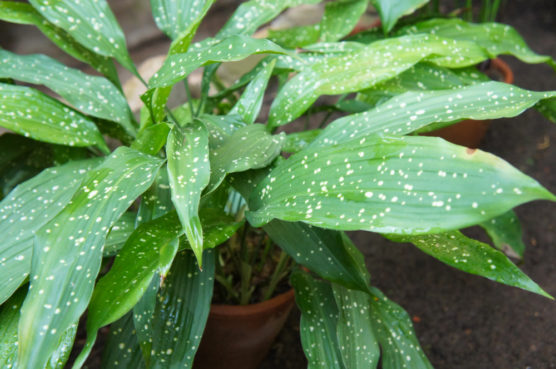
That looks like an exciting name, doesn’t it? Wondering if it’s made up of iron? No, that’s quite unreal, but the name comes from its toughness. It can survive the worst of conditions, just like the cast iron does.
Keep it under deep shade for days, and it will still be alright. You can also test it in brightly lit conditions for months. It prefers low light, which makes it an excellent addition for offices, bathrooms, and the like. The sword-like leaves with galactic white dots make it a beautiful addition to your work desk or the bedroom. Occasionally, they might also bloom flowers indoors.
Care and Maintenance:
The watering schedule for this plant depends on its location. Water it less frequently in low light conditions, once in two weeks or so. Increase the watering if you have placed it in a well-lit room. Allow half of the soil to dry out before watering it irrespective of its location.
Some of these plants are creepers that you can also hang on the wall. If you change your mind or your plant has grown too tall, you can place them on the floor anytime. They will still look as good as before.
